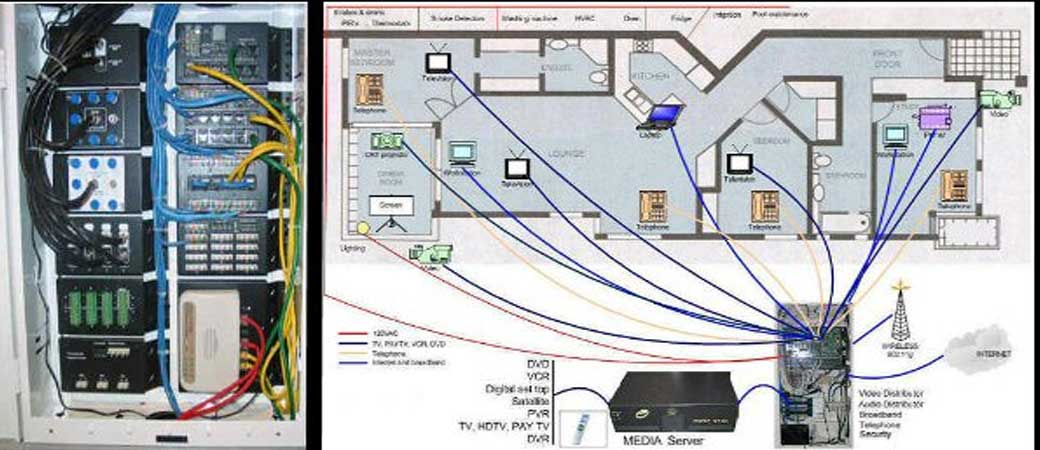
Structured cabling is an organized approach to cabling infrastructure. Although it may seem backward, to fully understand this concept it is easiest to look at what structured cabling isn’t. In many data centers, the cabling methodology used is defined as “point-to-point”. That method runs patch cables (or “jumpers”) directly to and from the hardware that needs connectivity.

In a structured cabling system, a series of patch panels and trunks are used to create a structure that allows for hardware ports to be connected to a patch panel at the top of the rack. That patch panel is then connected to another patch panel via a trunk (multi-fiber assembly designed for use in conveyance) in the MDA (Main Distribution Area).
Voice and data cabling, structured cabling, ethernet cabling, wiring, network cables…these are all terms used for structured cabling. Structured cabling is the copper or fiber wiring in the walls. These cables connect your computer, phone, wireless access points, cameras, copiers, etc. to your data and phone network. Without these cables we would not have network capability. These cables can also provide power to devices, such as cameras, wireless access points, and phones, using power over ethernet (PoE) technology.
Since the structured cabling infrastructure is the most critical part of your voice and data network, choosing a qualified voice and data cabling provider is a critical decision. Northeast Remote Surveillance and Alarm, LLC installs all of its projects to TIA/EIA-568 C, IEEE and BICSI standards with certified installers.

We use only high-end quality products in our structured wiring solutions, which are backed by manufacturer warranties. Our goal is to provide our customers with a physical layer infrastructure capable of supporting all applications designed in conjunction with today’s standards. By taking time to listen, study your business and understand your goals, We can install a complete voice and data cabling solution with service and support during and after the installation.
